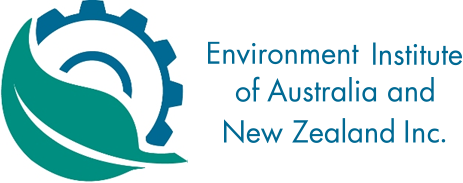-
Member Login
- Home
- About
- Institute Groups
- Australian Divisions
- New Zealand Chapter
- Special Interest Sections
- Communities of Practice
- Membership
- Events
- News & Publications
- Institute Programs
- Resources
- Jobs Board
- Contact Us
- Site Info
Baseline Radiological Mapping of Queensland

Drew Watson at work
About Us
The Radiation and Nuclear Science unit is a small team of Health Physicists and Radiochemists. Our purpose is the provision of radiation protection for Queenslanders via consultancy and radioanalytical services. Our laboratory is a member of the International Atomic Energy Agency’s ALMERA network (Analytical Laboratories for the Measurement of Environmental Radioactivity). Our work is often diverse and multidisciplinary, hence we welcome interest and input from other professionals such as Environmental Practitioners.
Qld Baseline Radiological Mapping
Baseline mapping is a dynamic aspect of environmental studies. It contains datasets that evolve with newly assessed areas, changes in values arising from environmental impacts, as well as technological advances in assessment methods and the increased accessibility of geographic information systems. This brief article endeavours to increase awareness of radiological data for Queensland and its applications.
Baseline radiological maps are indispensable for providing basic reference information that may be used in assessing public and environmental health; such as via epidemiological studies, resource prospectivity, remediating land contaminated with radioactive materials and after a radiation related incident. For example radiological maps provide comparative information for locations of interest or concern like a radiological waste repository or coal seam gas field; such as pre- and post-establishment or between post-establishment and unaffected areas.
The Radiation and Nuclear Science unit within Queensland’s Department of Health are progressively mapping baseline radiological characteristics throughout Queensland. Progress to-date is as follows:
Groundwater
Sampling surveys have investigated naturally occurring radioactivity concentrations in drinking water from aquifers in rural communities and with reference to the local geology¹.
Terrestrial Gamma Radiation
Terrestrial gamma radiation levels have been correlated to radionuclide concentrations in water drainage catchment sediment resulting in a map of gamma radiation levels across Queensland derived from published sediment geochemistry (refer to Figure 1)².
Figure 1
Plutonium Fallout & Radioecology
A collaborative research project with the University of Queensland is underway to assess sediment for plutonium radionuclides from fallout due to historical nuclear explosions. Locations found to have accumulated plutonium will be investigated with regards to environmental processes to further the understanding of Queensland’s radioecology.
Radon
Radon is a naturally occurring radioactive gas that emanates from uranium-bearing geology and can accumulate in spaces with poor airflow. Radon concentrations are being investigated in abandoned metalliferous mines and will soon be surveyed both indoor and outdoor throughout Queensland residential areas.
Marine Biota
Research has commenced to assess radionuclides in marine biota. The current focus is on developing a robust radio-analytical method for assessment of key radionuclides in a variety of biota pertinent to Queensland’s fisheries. Ultimately the method would facilitate mapping of radionuclide concentrations in fisheries resources and be beneficial in assessing the impact of incidents such as the 2011 Fukushima nuclear accident.
The origin, composition and mobility of natural and anthropogenic radionuclides in the environment are complex. Therefore assessment of their abundance is challenging though of value to a broad range of public and environmental health circumstances.
References
1. Kleinschmidt, R., Black, J. & Akber, R. 2011. Mapping radioactivity in groundwater to identify elevated exposure in remote and rural communities. Journal of Environmental Radioactivity, 102, 235-243.
2. Kleinschmidt, R. & Watson, D. 2014. Terrestrial gamma radiation baseline mapping using ultra low density sampling methods. Journal of Environmental Radioactivity, 151, 609-622.
We acknowledge and value the rights and interests of Indigenous Peoples in the protection and management of environmental values through their involvement in decisions and processes, and the application of traditional Indigenous knowledge.


